Kumara, enthusiastically comes into the house and says: ”Take camera, come, come”, I had no idea what to expect and run out into the scorching sun.
We escaped the heat of the dry season to Valparai, deep into the Western Ghats, mountains, of Tamil Nadu. Discovering it was Thaipusam – Tamil Nadu’s Lord Murugan festival.
In this Article
What a spectacle was unfolding in front of me:
Milk pots on the head and spears through cheeks.
Shouts of “Vetri Vel Muruga!” piercing the air. People hanging from hooks, pierced folks: children, woman and man. They are devote to the Hindu God Murugan and today is his festival.
Thaipooyam, also spelled Thaipoosam or Thai Poosam (தைப்பூசம்) is dedicated to Lord Sri Murugan, popularly known as:
- Muruga,
- Kartikeya,
- Karthikeyan,
- Skanda,
- Kumara,
- Subrahmanya, and
- Muthukumaraswamy.
He is believed to be the God of war and victory – or war and peace – and much revered by Tamils.

According to Hindu mythology, Thaipusam – Tamil Nadu’s Lord Murugan festival – is celebrated to acknowledge Lord Murugan’s triumph over the evil. As such, devotees make vows and pledges to Lord Murugan to prove their gratitude to him and pay penances to him on Thaipoosam day upon having their wishes granted.
Also Parvati his mother and Shiva, Murugan’s father as well as his older brother Ganesha are worshiped on this occasion.
MYTHS AND FOLKLORE OF THE THAIPUSAM FESTIVAL
Thaipusam comes from an amalgam of the words “Thai” – referring to the Tamil month of Thai (January – February) – and “Pusam” – the brightest star during this period. This particular star is at its highest point during the festival. Thaipusam is celebrated on the full moon day which falls between 15 January and 15 February every year.
The most popular legend behind this festival is as follows:
~ Source: The Significance of Thai Pusam by Uma Balasubramanian
MYTH: Lord Muruga kills the demon Tarakasuran on Thaipusam
Legend has it that the demon Tarakasuran was exterminated by Lord Muruga on this day. He received eleven weapons from his father Lord Shiva and the powerful lance (Vel) from His mother Parvati to destroy the demon who was tormenting the Devas – the gods.
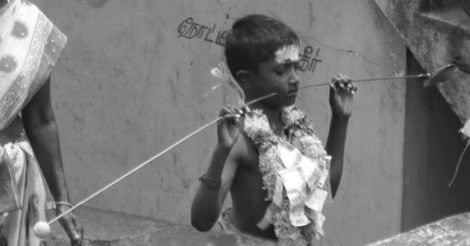
The Vel
The Vel is a symbol of purification. According to the legend, the Vel was given to Lord Murugan to eliminate three demons Surapadman, Singamugan, and Tarakasura. They represent the forces of hatred, greed, and arrogance.
The Vel, a symbol of light and wisdom was used by Lord Murugan to kill and bring peace to Heaven and Earth. The Vel is the protecting and purifying force of Lord Murugan, and Thaipusam is a celebration of these forces. It is a time for the devotees to seek Lord Murugan’s blessing to lessen the burden of bad karmas from wrong doings and to make life more positive.
Some devotees enter into a trance during such piercing due to the incessant drumming and chanting of
“vel vel shakti vel.”
Murukan’s lance, commonly the leaf-shaped Tamil vel, sometimes it is called shakti – Sanskrit. The priest of Murukan is the velan, a bearer of the lance. When Murukan holds the lance as shakti, he and his lance symbolize Parvati and Shiva – Shakti, the cosmic pair, god and soul, heaven and earth, god and world.
MYTH: Parvatis curse on Lord Muruga ends on Thaipusam
OM ॐ
Once when Brahma the god of creation did not pay obeisance to Lord Muruga, as he thought He was a mere child. Lord Muruga decided to teach Brahma a lesson. When Lord Muruga questioned his identity, Brahma answered that he was the creator of the Vedas.
Lord Muruga then asked the meaning of OM ॐ, the nucleus of the essence of scriptures and Brahma confessed his ignorance. Lord Muruga pounded his fist on Brahma’s tuft. Lord Muruga thought that he was incompetent for his job as a creator and incarcerated him.

Lord Shiva asked Lord Muruga whether He himself knew the meaning of OM ॐ. Lord Muruga revealed that he had learned it while Lord Siva was imparting this to Goddess Uma or Parvati. While Lord Siva was reciting this He eavesdropped on them hiding himself as a beetle in the cascading tresses of Parvati. When goddess Parvati came to know this she laid a curse on Him for eavesdropping in line with the rule that even a son if erring must be punished.
Lord Muruga observed a penance to be redeemed of the curse. Pleased with His penance Lord Shiva and Parvati appeared before Him and lifted the curse on Him. The day on which the curse was removed was Thai Pusam.
MYTH: On Thaipusam it is Lord Murugans birthday
~ Courtesy:BoldSky.com
Thaipusam is celebrated during the full moon in the Tamil month of Thai and commemorates the birthday of the Hindu deity Murugan.
The story of the birth of Lord Karttikeya or Murugan has different versions. In some texts it is said that He is the son of ‘Agni’ or the God of Fire.
However according to the Skanda Purana, Karttikeya is said to be the elder son of Lord Shiva and Goddess Parvati. It is also believed that Karttikeya was not born from the womb of Parvati. The Goddess was cursed by Rati, the consort of Kama (God of Love) that she would never be able to bear children.*
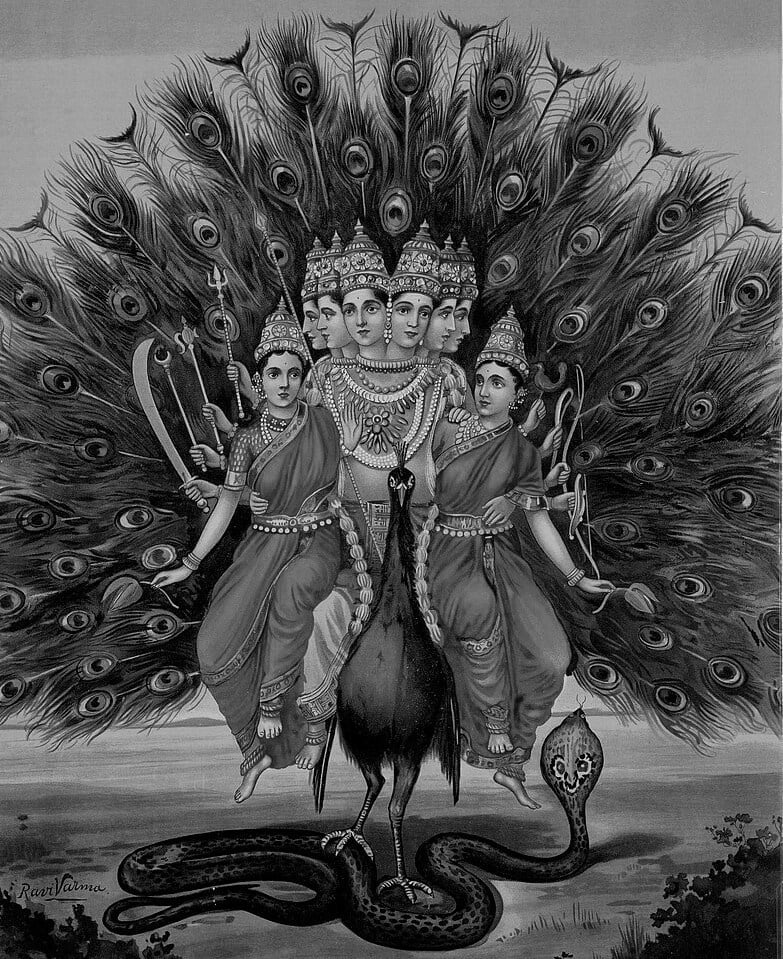
According to the mythology, there was a demon named Tarakasura who asked for the boon that he should only be killed by Lord Shiva’s son. He knew very well that Lord Shiva was an ascetic and He would not marry or have children. Hence, Tarakasura would be invincible.
However after much ado, Lord Shiva finally married Goddess Parvati. Since Parvati couldn’t conceive due to the curse, Lord Shiva took her to a cave and asked Her to meditate. As they both meditated, a ball of fire emerged out of their cosmic energies. In the mean time, the other Gods being insecure from Tarakasura, sent Agni or the God of fire to get hold of the ball of fire. But even Agni couldn’t bear the heat of the energy of Shiva and Parvati. So, He handed over the ball to Goddess Ganga. When even Ganga couldn’t bear the heat, She deposited the fire ball into a lake in a forest of reeds.
Then Goddess Parvati took the form of this water body as She alone could bear the energy of Shiva and Shakti. Finally the fire ball took the form of a baby with six faces. Hence, Karttikeya is also known as Sanmukha or the
‘God with Six Faces’.
He was first spotted and taken care of by six water nymphs who represented the Pleiades or the Krittikas. So, the divine child was known as Karttikeya or the son of the Krittikas. Later Karttikeya kills Tarakasura and becomes the commander-in-chief of the Gods.
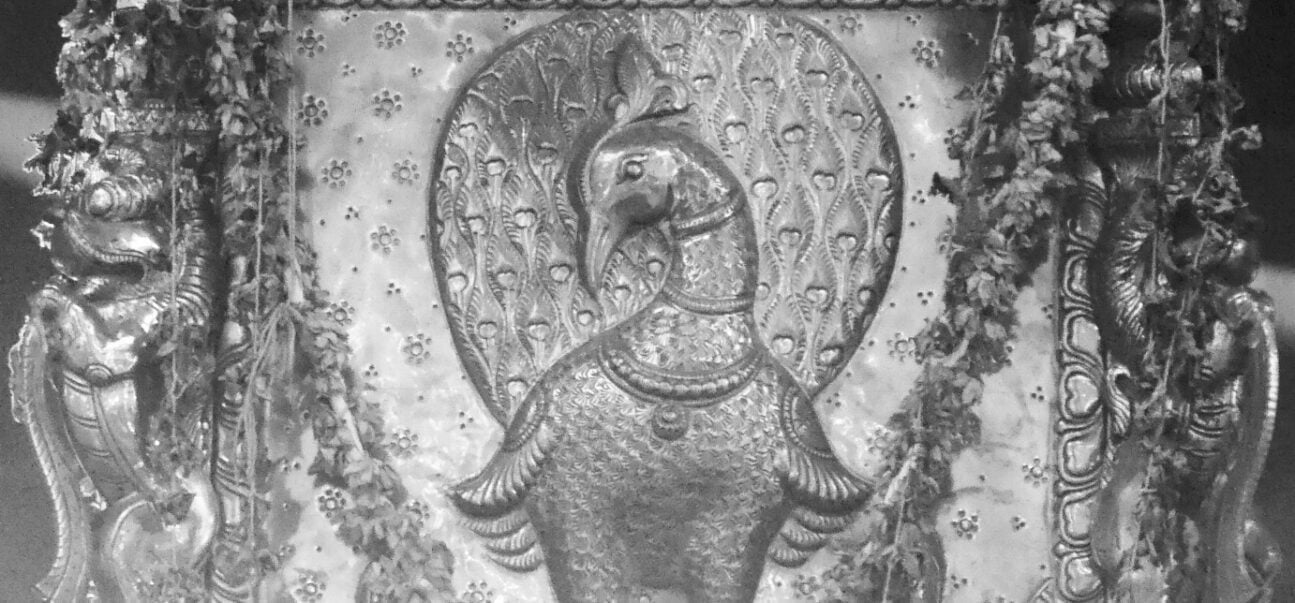
Lord Karttikeya is depicted as a dark, young man with a spear in His hand. His mount is a peacock and He symbolizes power and strength. Through the blessings of Lord Karttikeya, one can achieve great strength and get rid of all his woes. His peacock represents Him as the destroyer of all bad habits and a conqueror of sensual desires. Murga represents perfection and the need for every human to move towards being perfect.
Other legends about Thaipusam:
The Kaveri legend: River Kaveri fed up with the entire attention river Ganga was receiving, prayed to Lord Vishnu. So Lord Vishnu appeared and blessed her on Thai poosam.
The Cosmic dance: Another legend is that Shiva and Parvati were involved on a cosmic dance during this period, which led to the celebration of Thai Poosam.
TREELORE: How Murugan was originated outside of his mothers womb – or – the trees kimsuka, peepal and banyan originated
~ Dr. Kailash Pattanaik
*This origin myth has little to do with Murugan or Karttikeya directly, but the incident plays a greater role in the genesis of Karttikeya. Because of this incident Karttikeya originated outside of his mother’s womb.
There is a myth that explains how the trees kimsuka, peepal and banyan originated. This myth focuses upon the creation of Karttikeya indirectly. The myth is found in Mahadevi Dasa’s Kārttika Mahātmya.
During the time of conjugal meeting of Lord Siva and Parvati, gods in the heaven learned that the son, who would born out of this meeting, would be a mighty one and would be invincible. He would conquer Triloka: pruthibe (the earth), swarga (the heavens), and patala (the lower realms); he would make all other gods his subordinates.
Out of this anxiety the gods wanted to interrupt the union of Siva and Parvati. So they prayed to Brahma and Vishnu to do the needful. Both Brahma and Vishnu went to the place of Siva and Parvati and uttered the sacred mantra Om ॐ. As a result Siva became conscious and out of shame he ran away. The whole incident not only upset Parvati; it also raised her anger. She cursed Brahma, Vishnu and Siva to be immovable. Immediately the three of them were transformed into the trees kimsuka, peepal (Bodhi) and banyan respectively. Ficus trees
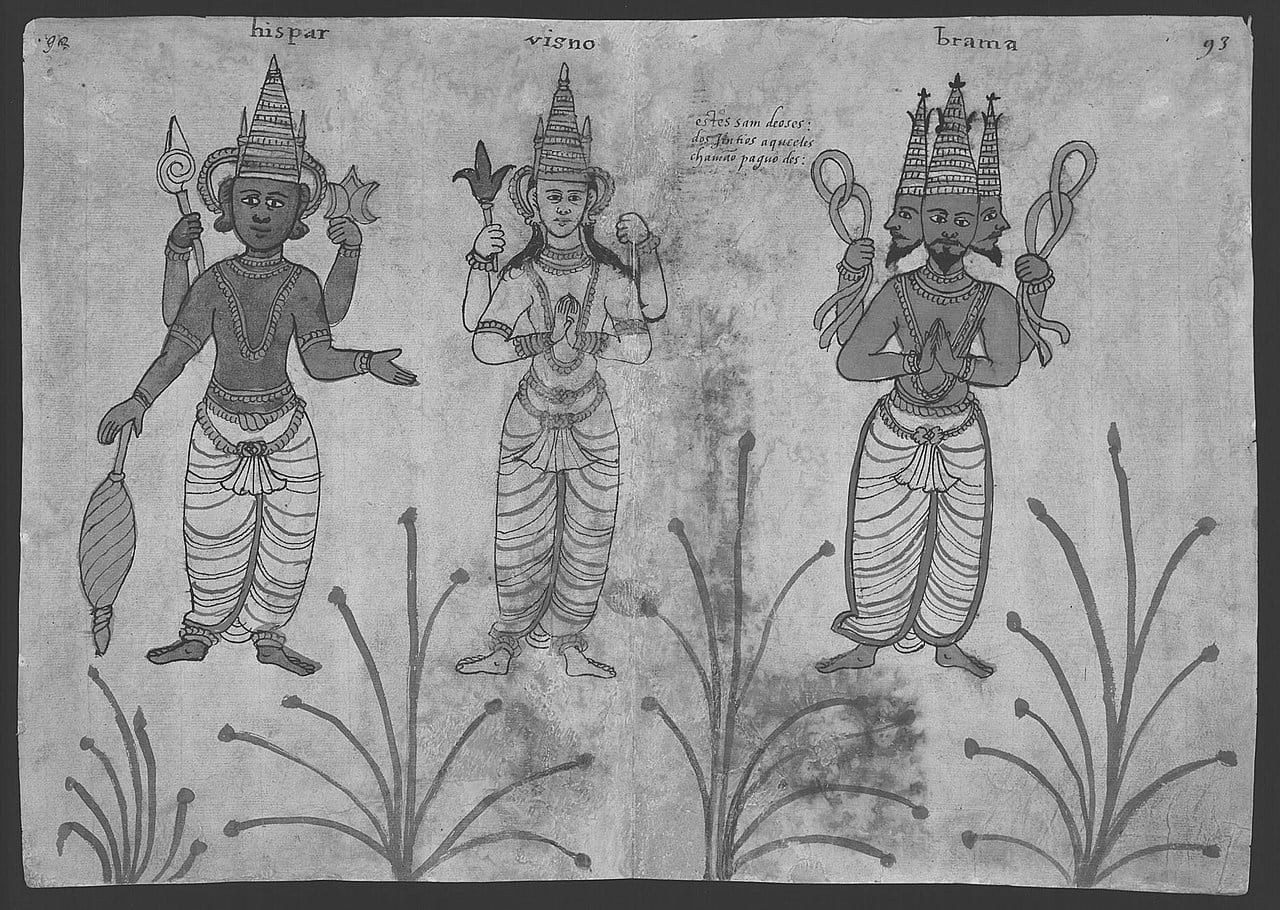
Rituals and Celebrations of Thaipusam – Tamil Nadu’s Lord Murugan festival
Preparation for the celebration:
During Thaipusam, the people thank Lord Murugan for granting their wishes and defeating the “daily demons” that plague their lives, be it illnesses, career blocks or infertility. Believers not only thank him, they also ask forgiveness for transgressions made, as well as pray for blessings. This festival of faith, endurance and penance is celebrated to honor also courage, wealth and wisdom.
The rituals of Thaipusam usually begin much earlier before the big day itself.
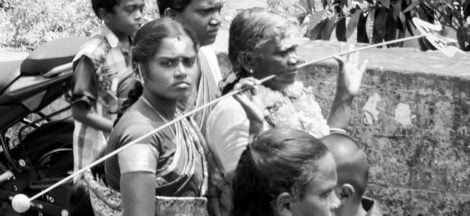
Some devotees drink no alcohol, and eat no meat before the occasion while others shave their heads as an act of gratitude, repentance or as a poignant plea to have prayers answered. People who are willing to participate in Kavadi have to fast and pray regularly before approximately 48 days before Thaipusam.
On the eve of Thaipusam, the image of Lord Murugan is transported from one temple to another, accompanied and waited on by devotees bearing offerings to the deity.
Milk, a symbol of purity and virtue, as well as flowers, fruits and rooster are common Thaipusam offerings.
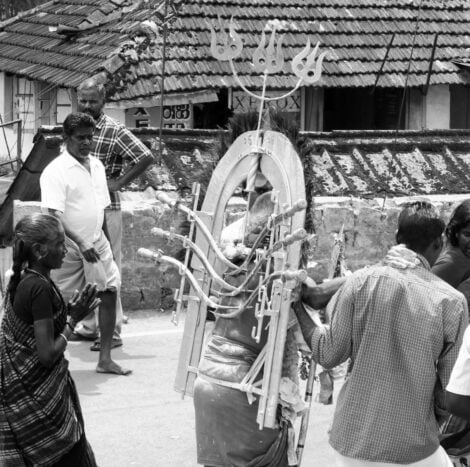
KAVADIS
Kavadis, or kanvar — literally “sacrifice at every step”, can be seen attached to devotees via hooks, swords and thin spears that pierce their backs, cheeks and mouths. Surprisingly, little to no blood is spilled throughout the procession.
This is quite a sight and I wonder how these kavadi bearers withstand the pain. But their fervent faith in their Lord Murugan’s protection spares them from pain and prevents them from shedding blood. Bearing a kavadi is an act of devotion and humility.

MYTH: On the Kavadi Attam
There are different myths about the kavadiyattam.
One tells that this is the dance of Lord’s servants encouraging him to start the war with the demon as he had the divine spear with him. According to this, the word “Kavu” means temple or divine place and “Adi” means servants.
It is a ceremonial self-sacrifice and offering by the devotees to please Lord Murugan and a major ritual in Thaipusam – Tamil Nadu’s Lord Murugan festival. Kavadi denotes burden and the devotees are taking all their burdens on their shoulders and dance to appease the Lord. According to this belief, Murugan will enjoy their dance and remove the burdens from their shoulders.
“The term Kaavadi appears to be also a combination of the two words Kaavi and Padi , which denotes the vow made to walk a distance to a particular place of pilgrimage on foot.”
Pilgrims carry milk and water vessels (Kavadi) in the sacred journey to the God in the procession of Thaipusam festival. People offer yellow or orange colored fruits and flowers which are his favorite colors, they carry milk, water, fruits and floral tributes.
Kavadis vary in shape and form, flower-bedecked and decorated peacock feathers with brass bells adorning it.
Some devotees show their complete dedication; when they pierce their body, tongue, and cheeks. After piercing their body; devotees carry the Kavadi and walk barefoot to receive the blessings from the Lord Murugan.

“I feel no pain. When you surrender your mind to Lord Murugan, one will feel no pain”
MYTH: On the origin of the kavadi ritual
Or how Murugan, Idubam and Kavadi came to Palani
Sage Agastya wanted to take two hills – Sivagiri and Saktigiri – to his abode in the South and commissioned his asuran disciple Idumban to carry them. Idumban was one of the very few asuran survivors of the surāsuran war between Murugan’s forces and those of Surapadman. After surviving the war he had repented and became a devotee of Lord Murugan.
At this stage, Subrahmanya or Muruga had just been outwitted by His brother Ganesa in a contest for going around the world and He was still smarting over the matter. Ganapati had won the prized fruit (the Jnana-pazham) by simply going around His parents. Long after this, Subrahmanya came seating on His peacock to find that the prize had already been given away.
In anger, He vowed to leave His home and family and came down to Tiru Avinankudi at the Adivāram (meaning ‘foot of the Sivagiri Hill’). Siva pacified Him by saying that Subrahmanya Himself was the fruit (pazham) of all wisdom and knowledge. Hence the place was called Pazham-nee (‘You are the fruit’) or Palani. Later He withdrew to the hill and settled there as a recluse in peace and solitude.
Idumban bore the hills slung across his shoulders in the form of a kavadi, one on each side.
When he reached Palani and felt fatigued, he placed the kavadi down to take rest. When Idumban resumed his journey, he found that he could not lift the hill.
Muruga had made it impossible for Idumban to carry it. Upon the hilltop the great asuran spotted a little boy and demanded that he vacate at once so Idumban could proceed with his task. The boy, who was yet in a fighting mood, refused. In the fierce battle which ensued, Idumban was slain but was later restored to life.
Idumban belatedly recognized the boy as none other than his ista devata Murugan and prayed to Him that:

Whosoever carried on his shoulders the kavadi,
signifying the two hills and
visited the temple on a vow should be blessed; and
He should be given the priviledge of standing sentinel at the entrance to the hill.
Hence at Palani there is the Idumban shrine half-way up the hill where every pilgrim is expected to offer obeisance to Idumban before entering the temple of Dandayudhapani Swami. Since then, pilgrims to Palani bring their offerings on their shoulders in a kavadi. The custom has spread from Palani to all Muruga shrines.
~ Source: Palani: The Hill Temple of Muruga (Madras, 1975) by Somalay for Arulmigu Dandayudhapani Swami Temple, Palani.
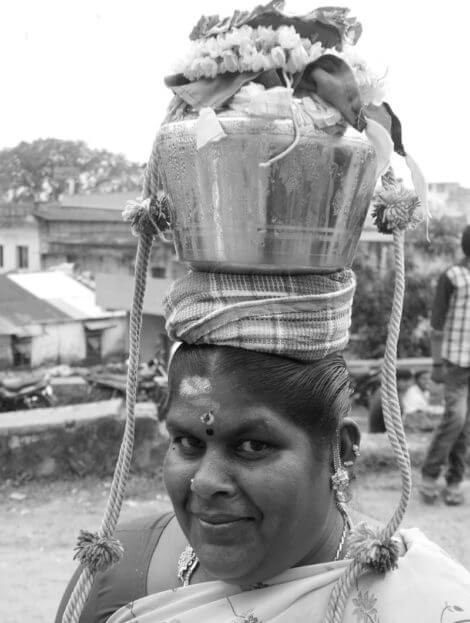
Types of Kavadis
Paal kavadi
The Paal kavadi is one of the most common kavadis, mostly carried by women devotees. ‘Paal’ means milk in Tamil. As such, people taking the Paal Kavadi usually carry pots filled with fresh cow’s milk on their shoulders or the top of their heads.
Theertha/ Panneer Kavadi:
Devotees carry pots filled with sanctified water or rose water on their shoulders or heads while embarking on a long journey to the abode of Lord Murugan. Again, the water will be used for prayers.
Vette Mulle kavadi

This type of kavadi involves large hooks pierced into the skin of the back of devotees, attached to ropes and pulled by another person walking behind the devotee. Prior to this, some Thaipusam celebrations saw extreme practices like piercing the hooks onto the back of a devotee and hanging the devotee from a steel or wooden frame with tires. Other people will push the frame with the devotees hanging, all the way until he reaches Lord Murugan. This type of kavadis, named the ‘flying kavadi’, has since been banned.
Alavu kavadi:
The Alavu Kavadi involves piercing of the tongue or cheek with small spear, often known as the ‘Vel’, Lord Murugan’s weapon. The main concept of this type of kavadi is to prevent the person from speaking, thus preserving his attention, focus and energy towards Lord Murugan.


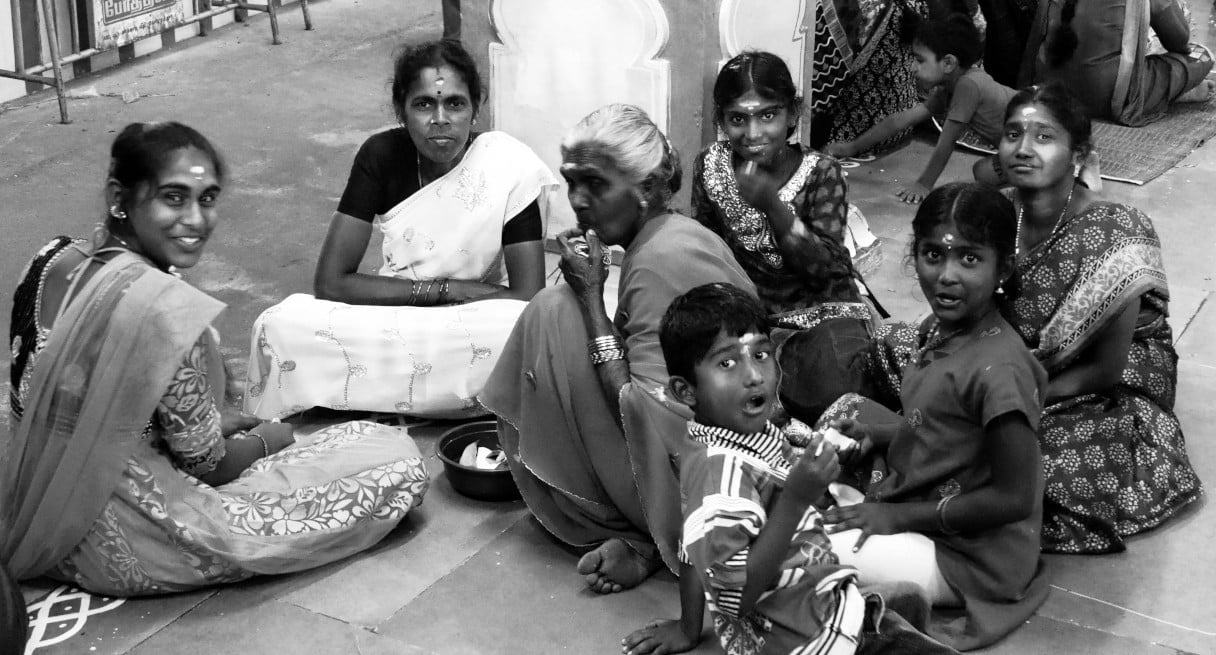
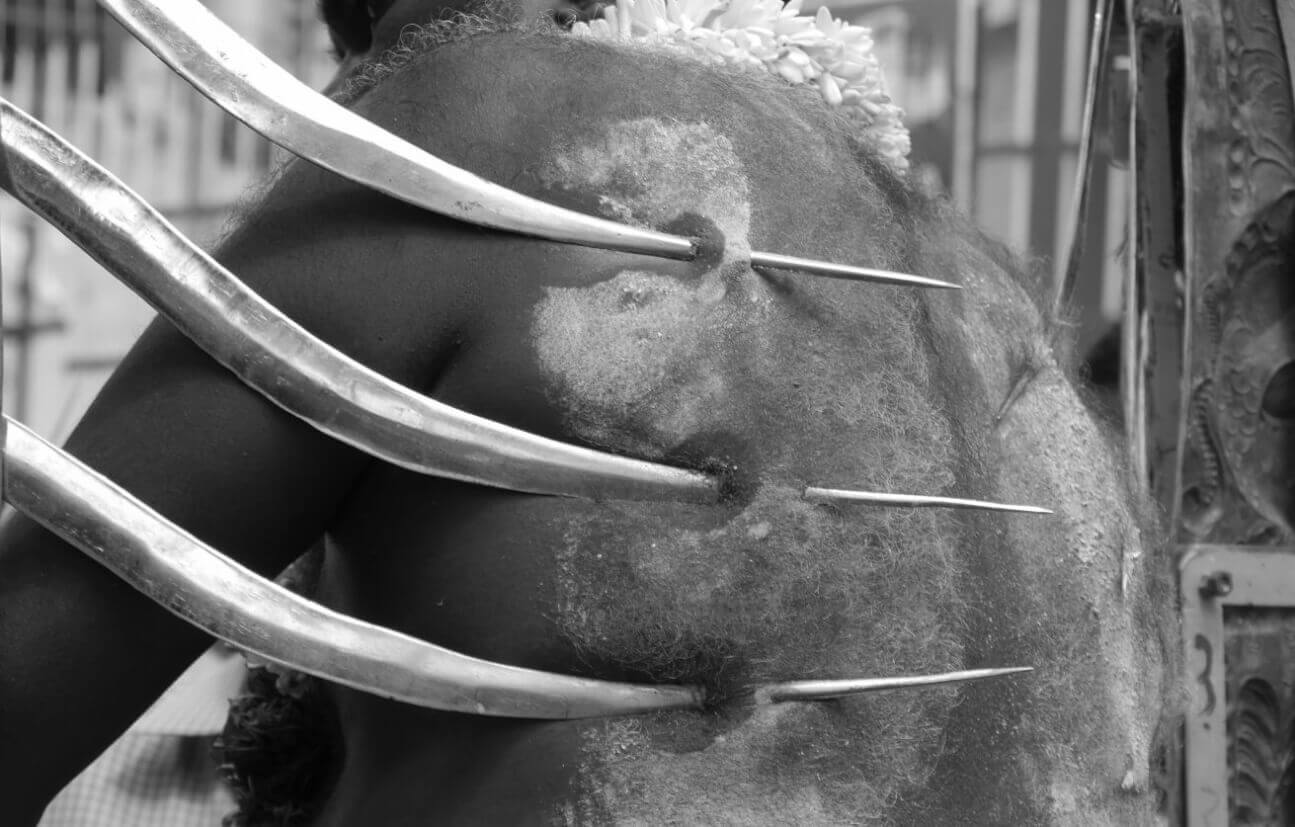
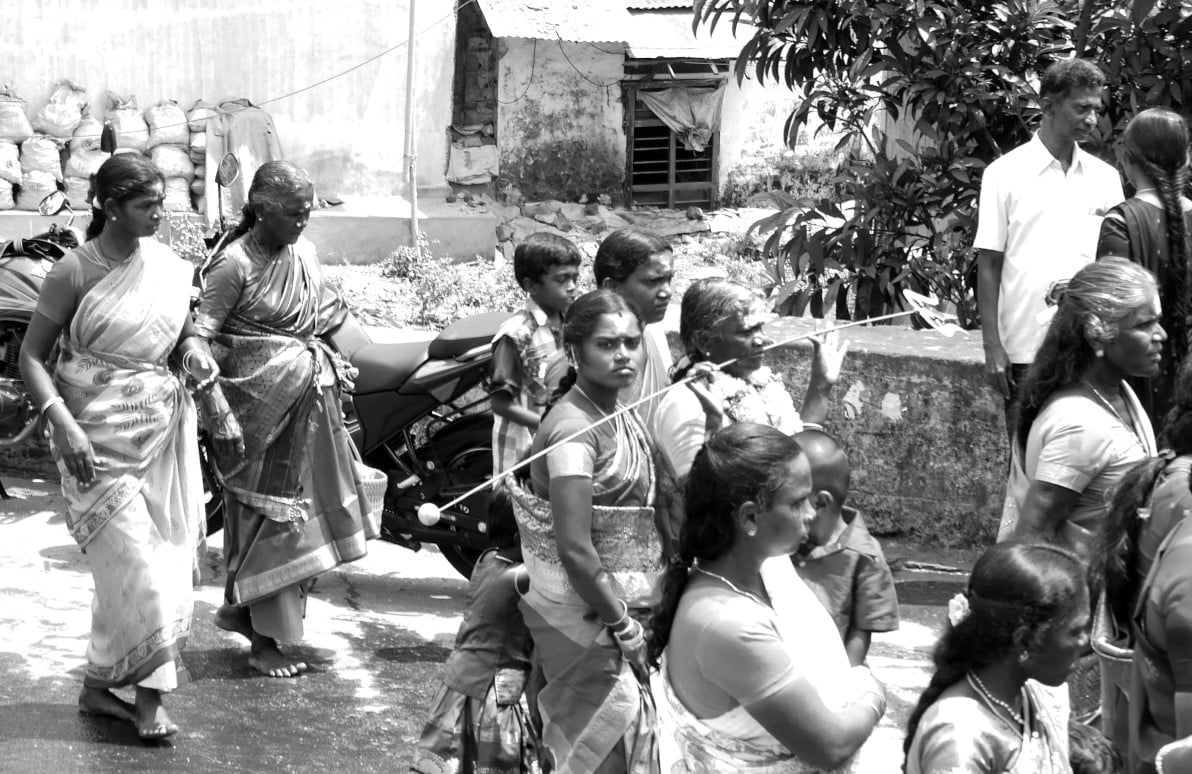
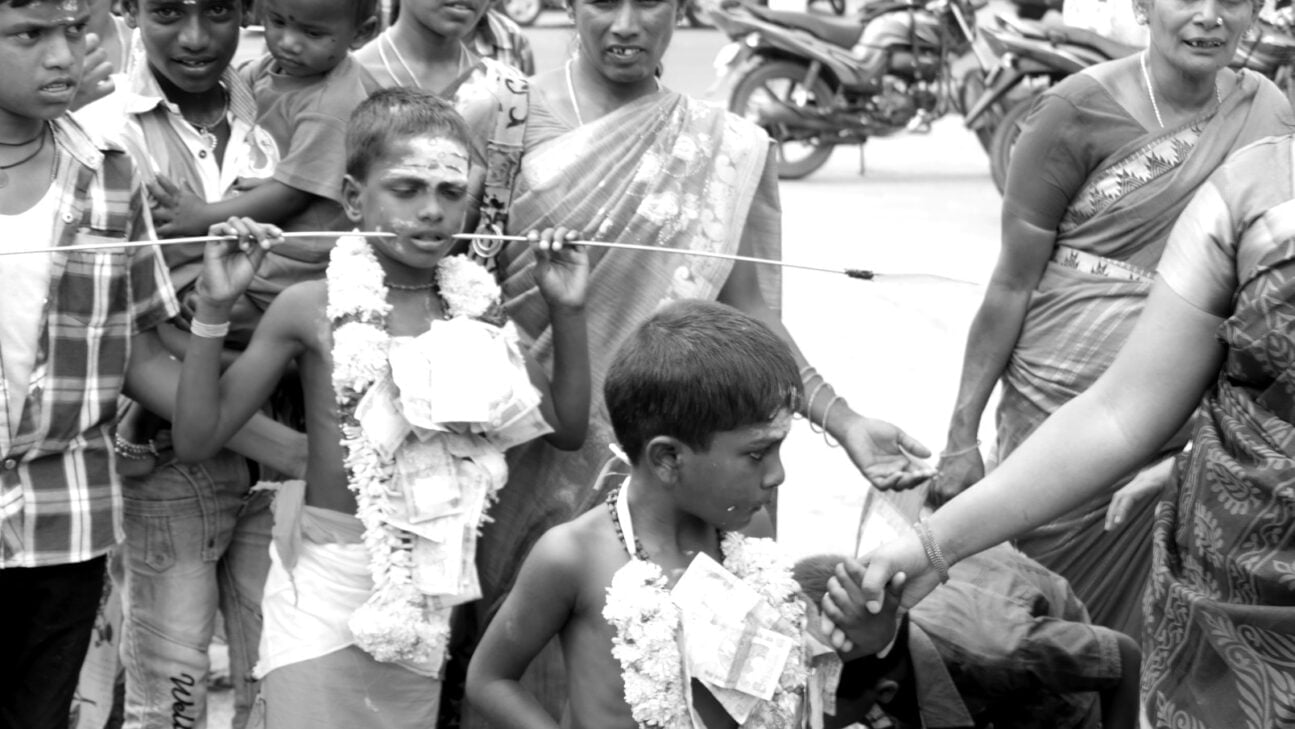
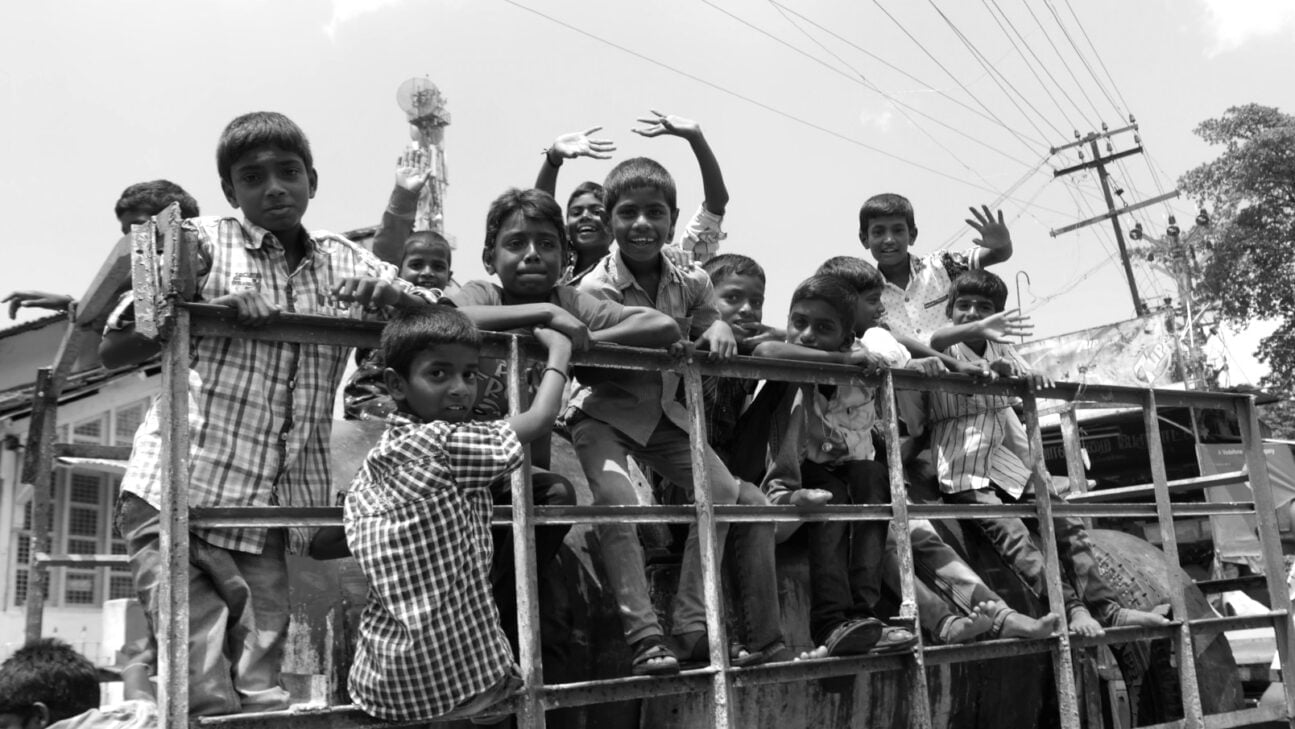

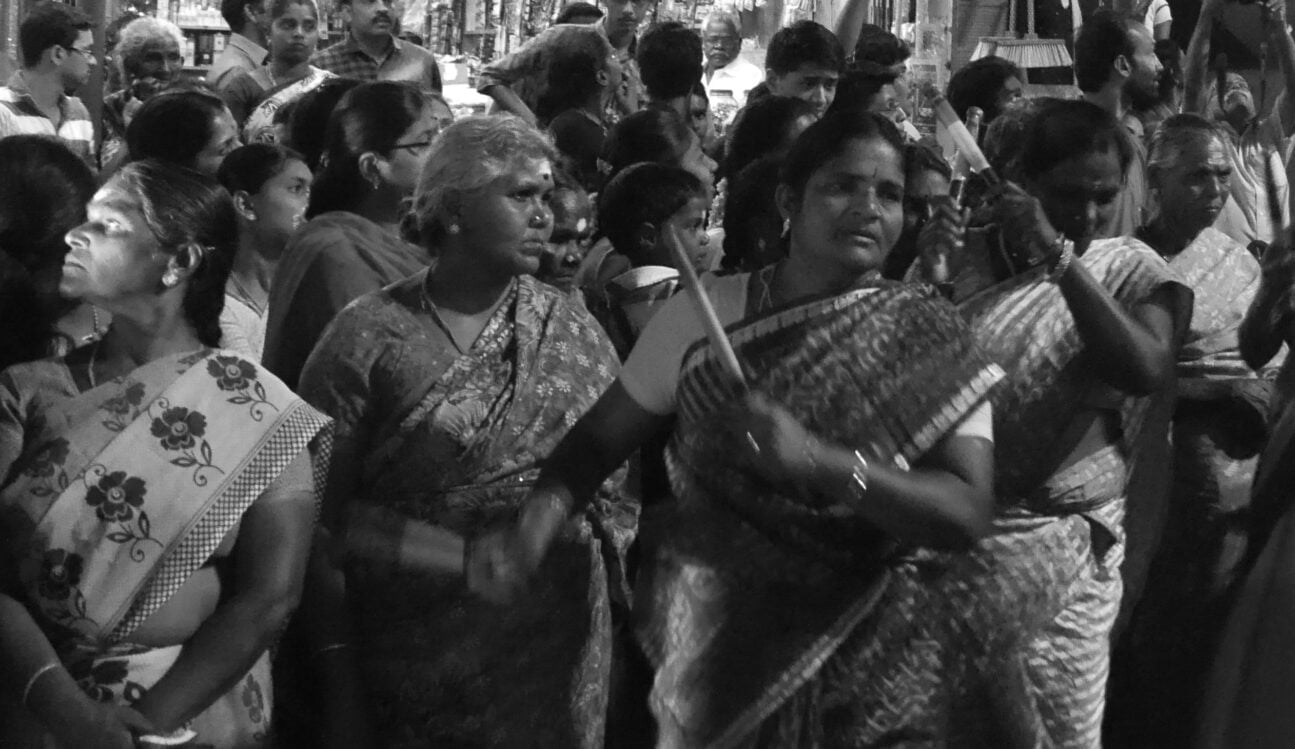
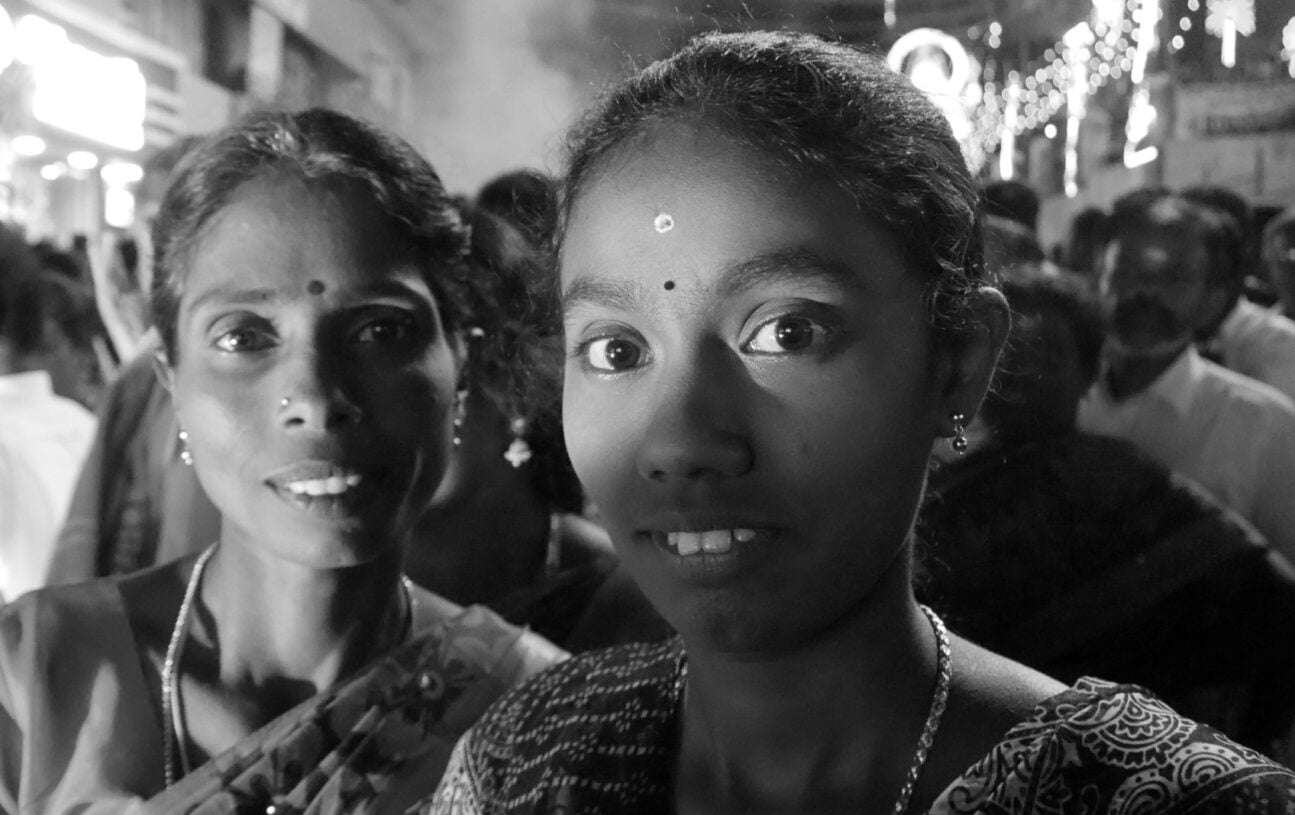

Thaipusam – Tamil Nadu’s Lord Murugan festival – worldwide
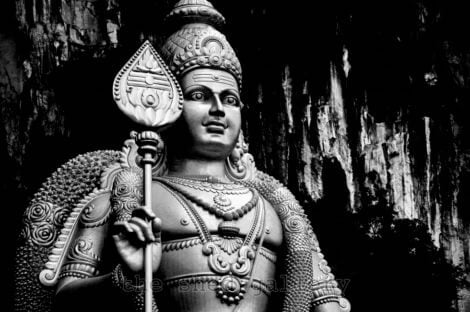
Thai Poosam festival is celebrated not only in India but also in Malaysia, Singapore, Thailand, Mauritius, Sri Lanka and Myanmar. Tamil communities in other countries also have Thaipusam, like South Africa, Guadeloupe, Indonesia, Trinidad and Tobago, Guyana, Suriname, Jamaica, and other parts of the Caribbean.
On the eve of Thaipusam, the processional Murugan image, placed in a ter (chariot), is taken on a procession through town, followed by dancers, and two disguised as a gigantic bull and lion lit by led-lights. Devotees in dressed in orange, holding kavadis on their shoulders follow the procession.
Along the procession, someone gives me a coconut in the hand and doing what the others do, I just smash it on the ground, before the chariot with the sanctum passes. Coconuts are smashed to signify the breaking of the ego and the emergence of a purer self. Another act of devotion to the Lord Murugan.
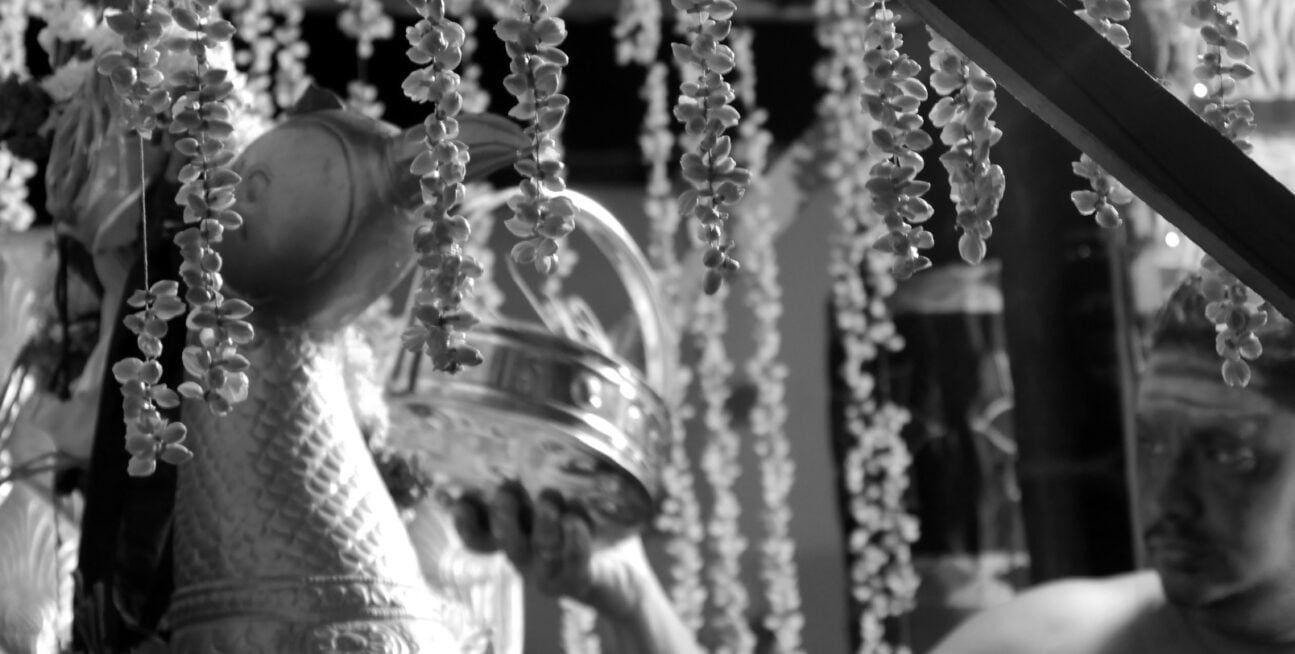
Thaipusam – Tamil Nadu’s Lord Murugan festival is unique.
ॐ Om Murugan
vetrivEl iRaivanukku arOharA’
Vetri Vel muruganuku arrogara
Vetri Vel Vera Vel
Videos on our channel EARTHSTORIEZ
~ ○ ~
Keep exploring:
Works Cited & Multimedia Sources
- FOLK DANCES THEIR ORIGIN AND DEVELOPMENT – cap. 2. Shodhganga
- Devotion to MurukanmurDevotion to Murukanugan.org/research/mcgrath.htm
- Dr. Kailash Pattanaik:Karttikeya in the folk life of Orissa. http://murugan.org/research/pattanaik.htm
- Faith, Endurance and Penance: Thai Poosam kavadi ritual
- from Palani: The Hill Temple of Muruga (Madras, 1975) by Somalay for Arulmigu Dandayudhapani Swami Temple, Palani. http://murugan.org/kavadi.htm
- Jothi Arul C. Pilgrimage tourism and changing local livelihood a study of temple town of Palani Tamil Nadu India.
- Kanda Purnam. http://www.palanitemples.com/english/kanda_puranam.htm
- Murugan, Subrahmanya or Karthikeyan. http://murugan.org/research/jain_karttikeya.htm
- Raju K. Special day for Lord Muruga http://www.thehindu.com/todays-paper/tp-national/tp-tamilnadu/special-day-for-lord-muruga/article5584877.ece
- Research papers on the cult of Skanda-Murukan. http://murugan.org/research/index.htm
- Rituals and traditions of Thai Pusam festival
- Skanda Kumāra in ancient North India
- Skanda Legends in the Puranas. http://murugan.org/research/gangadharan.htm
- Thai Pucam at Palani
- Thai Pusam – தை பூசம்
- Thaipusam: The Murugan Festival
- The Legend of Lord Karttikeya or Murugan http://murugan.org/research/skanda-chowdhury.htm
- The Many Faces of Murukan by Fred W. Clothey
- The Significance of Thai Pusam
- The Skanda Cult in India: Sanskrit sources http://murugan.org/research/sarma.htm



